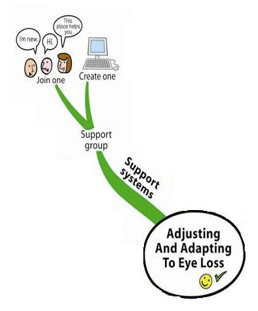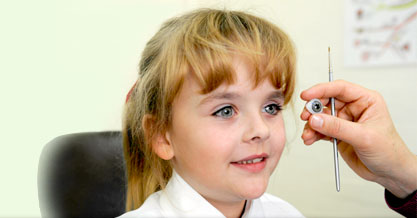Support systems
Support systems

Support Systems
How to Set Up a Support Group for People with Artificial Eyes
Do you, or does someone close to you, have an artificial eye, but have nobody to talk to who understands?
It’s a common experience. Losing an eye and then adjusting to life with an artificial eye aren’t the sort of things friends and family can relate to or offer advice on.
And you might think there aren’t many people in your situation. But you’re wrong. There are.
It’s a matter of finding them and getting them together as a support group.
Sound difficult? It’s not really.
Here are five easy tips to setting up a support group in your area.
1. Find an interested person to drive the idea.
All you need is one keen person with lots of enthusiasm to start the ball rolling.
2. Get two or three others involved to help manage the process.
No-one can handle the establishment of a group on their own. With a few people, ideas flow and tasks get completed.
These people will meet more often than the support group. They’ll bring different skills to the group, such as printing and designing brochures to advertise events. As they say, more hands make light work. But you don’t need too many.
3. Choose a location for your first get together.
There are so many things you can do. You might like to have a picnic, play mini golf or bowls, or meet in a coffee shop.
We’ve found our picnics in the park highly successful. People have time and space to move around talking to one another over the sharing of food. Kids gain such a lot out of these events. At picnics, they play football and cricket with kids just like them. It helps them to see they’re not the only ones with an artificial eye.
4. Decide on catering if required.
Some might balk at this, but it’s not that hard.
If you’re holding a picnic, ask people to bring a plate or a salad. Your ocularist might even chip in by supplying the meat.It shouldn’t be an expensive affair. You’d be surprised at the generosity of places like bakeries in donating bread and rolls to charity events.
5. Let people know about the event.
The only way to do this is by involving your ocularist. Your ocularist has a database of clients who are potential group members. Either ask him/her to send out a letter advertising your event, or you can design your own brochure/flyer to be mailed out.
Your ocularist will benefit from the support group as well. The mail-outs are a much nicer way of keeping in touch with his/her clients. Wouldn’t you prefer this form of contact to those dreaded reminder notes about the need for ongoing care of your artificial eye?
So don’t be shy. Put these five tips into action and you’ll be on your way to your first support group event.
Support Groups
ArtEyes Australia
ArtEyes is an Australian support group for people who live with artificial eyes. Members range in age from infants to the elderly. The group welcomes family and friends to share stories, offer support, and just to have fun with others who understand the needs and challenges of people with artificial eyes! As well as online chat and a peer support buddy system, Arteyes arranges two family events each year – a bowling afternoon and a spring picnic.
Microphthalmia Support Group
This is a valuable online support group for family and friends of children with microphthalmia as well as people who lived with the condition.
Orphans of the Cancer Storm – Retinoblastoma Support Group
This website is dedicated to the dissemination of information about retinoblastoma (a malignant eye cancer) and optic glioma (a brain tumour). The founder and editor of this website is Abby who was diagnosed as an infant with bilateral retinoblastoma.
Losteye.com
This is a website for people who have lost an eye or may be facing future surgery. It is edited by Jay Adkisson who lost an eye from a choroidal melanoma. The website has practical information as well as a lively and supportive online forum.



